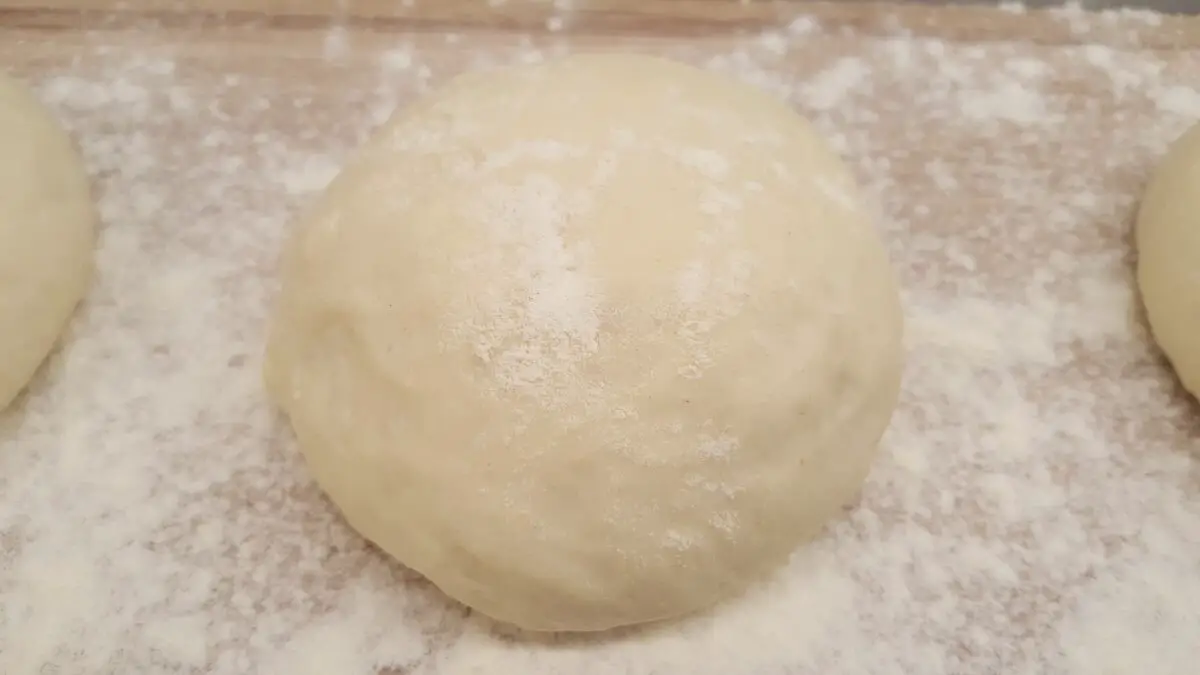Sometimes it looks awfully hard to find a good pizza dough recipe in English with metric measurement. Even if original Italian recipes use metric ingredient amount, and even if it is unarguably better to use metric weigh units when making a bread dough (pizza is a type of bread), for some reason every English recipe tries to convert metric to US measurements.
If you live outside the United States, chances are you’re measuring your ingredients by weight and use the metric system (kilogram, milliliter, etc.). That’s much better, as you can be more precise with the proportions. And even the original Italian pizza recipes are of course in metric measurement, since Italy uses the metric system.
Still, it’s difficult to find a good pizza dough recipe metric version online in English. That’s why I’m posting this recipe here, since I’m also using the metric system in my kitchen.
This pizza here on the picture was made using this metric pizza dough recipe:
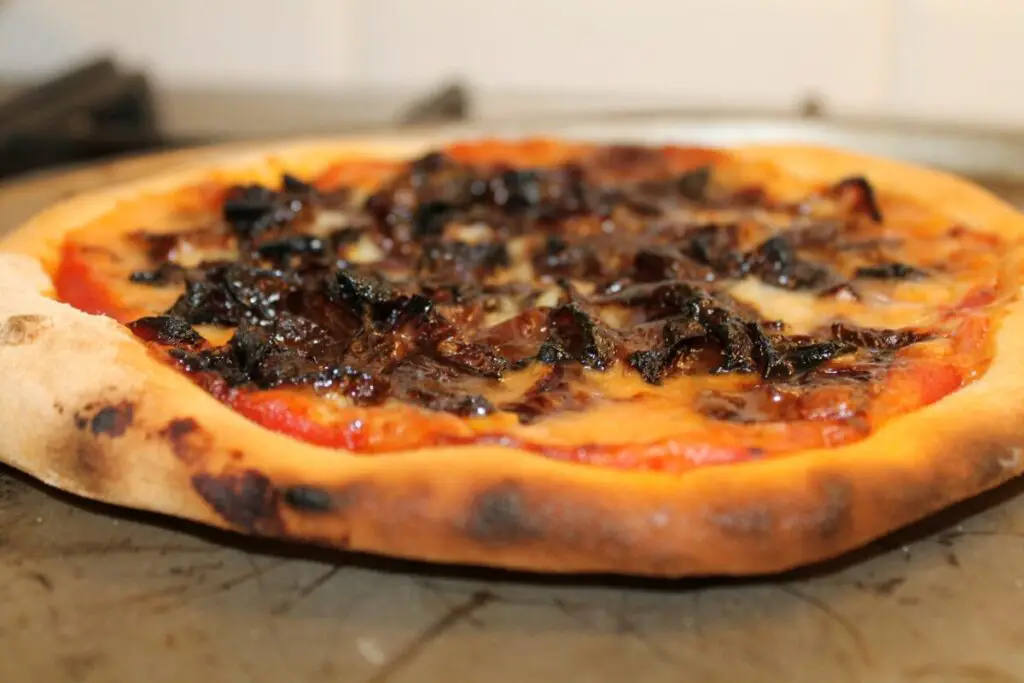
Metric Pizza Dough Recipe
In this metric pizza dough recipe I give you instructions for making pizza dough for 2 regular pizzas, about 30-32 cm. Please check the conversion table below this recipe to see ingredient amounts for different servings.
This recipe focuses on metric measurements for homemade pizza dough. Please check my original pizza dough recipe for more instructions on how to make pizza at home.
Note On The Ingredients
- Alternatively, you can use fresh yeast to make your pizza dough. In this case, use 8 g fresh yeast for 1 pizza, 50 grams for 1 kg of flour. Dissolve your yeast in 100 ml of the water with the sugar and 1 tbsp from the flour. Proof for 15 minutes in a warm place. Then add your proofed yeast to your dry ingredients.
- Sugar and salt can be measured with a teaspoon, even with a regular kitchen teaspoon, even if using metric measurements. Use 1/3 tsp of sugar and salt per pizza.
If you follow this recipe, your pizza dough is ready. The next step is to shape your pizza. Then you can add the pizza sauce and your toppings, and finally bake your pizza. Check out these links below to get detailed instructions on all of these steps. Metric ingredient amounts are always included.
Metric Pizza Dough Ingredient Table
Check out this metric conversion table if you want to prepare pizza dough for 1, 2, 3, 4, 5 or 6 persons.
| Ingredient | 1 pizza | 2 pizzas | 3 pizzas | 4 pizzas | 5 pizzas | 8 pizzas |
|---|---|---|---|---|---|---|
| Flour | 165 g | 335 g | 500 g | 665 g | 835 g | 1 kg |
| Active dry yeast | 2 g | 5 g | 7 g | 9 g | 12 g | 14 g |
| Extra virgin olive oil | 10 ml | 20 ml | 30 ml | 40 ml | 50 ml | 60 ml |
| Lukewarm water | 100 ml | 200 ml | 300 ml | 400 ml | 500 ml | 600 ml |
| Sugar | 1 g | 2 g | 4 g | 5 g | 6 g | 8 g |
| Salt | 2 g | 4 g | 6 g | 8 g | 10 g | 12 g |
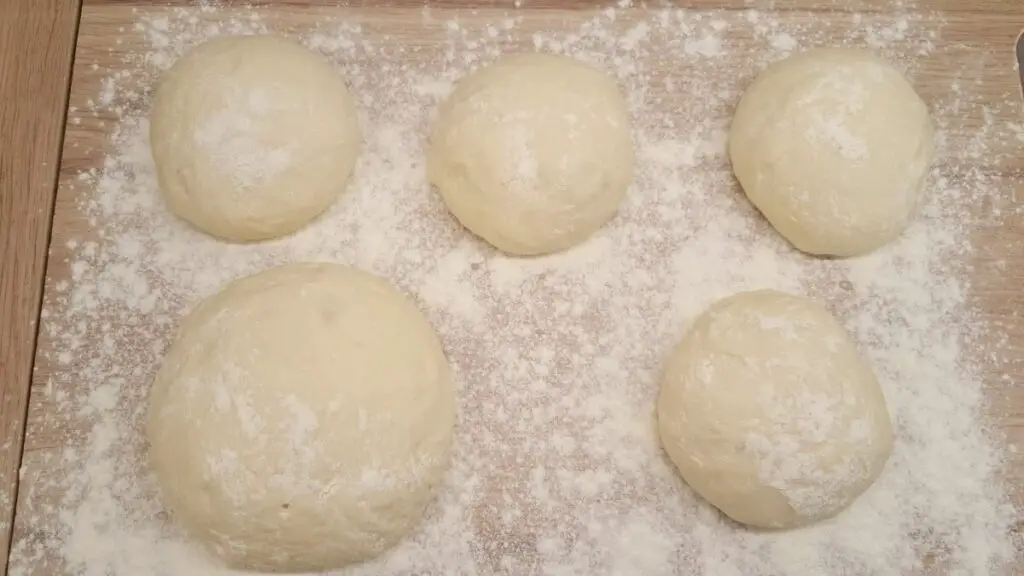
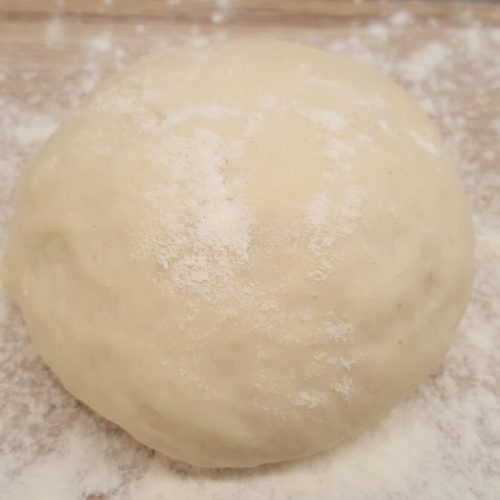
Metric Pizza Dough
Ingredients
- 335 g flour
- 4 g active dry yeast or 16 g fresh yeast
- 20 ml extra virgin olive oil
- 200 ml lukewarm water
- 2 g sugar
- 4 g salt
Instructions
- Start making your pizza dough by measuring out your dry ingredients. Add flour, active dry yeast, sugar and salt to a large mixing bowl.

- Add olive oil and lukewarm water.
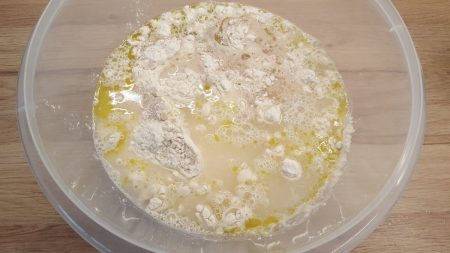
- Using your dough hook, knead your pizza dough for 10 minutes.The perfect pizza dough should be completely smooth. It shouldn't stick to the side of your bowl, but still feel a little bit wet when you touch it.

- Place your dough in a large bowl, previously oiled with about 1-2 tbsp extra virgin olive oil. Move it around with the hand so that all parts should be covered with oil.
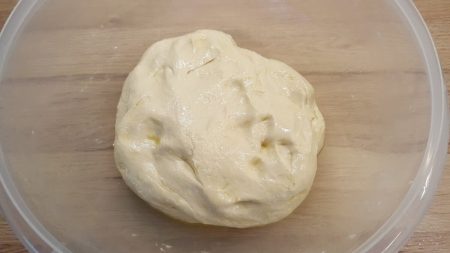
- Let it proof for 90 minutes under a lid.
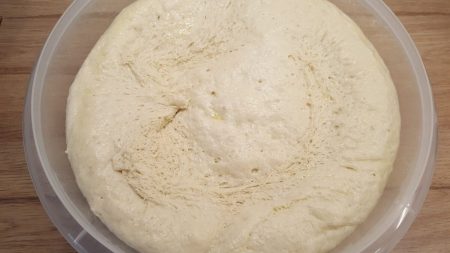
- After 90 minutes, push the air out of the dough.
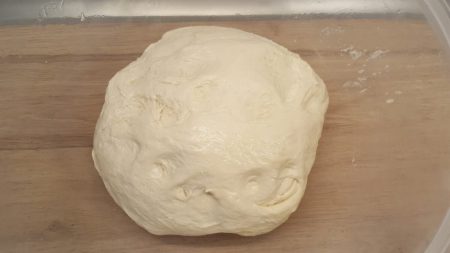
- Cut the pizza dough into equal pieces – 1 for every pizza. For the amounts in this recipe, cut it into 2 equal pieces, about 280 g each.

- Form a ball from each of the dough pieces. Start by making a circular motion with your palm of your hand, with some pressure. Then release the pressure gradually until you get a nice ball shape. Put the balls on a lightly floured work surface. Dust them with some more flour, and let them proof covered with a kitchen towel for another 15 minutes.


